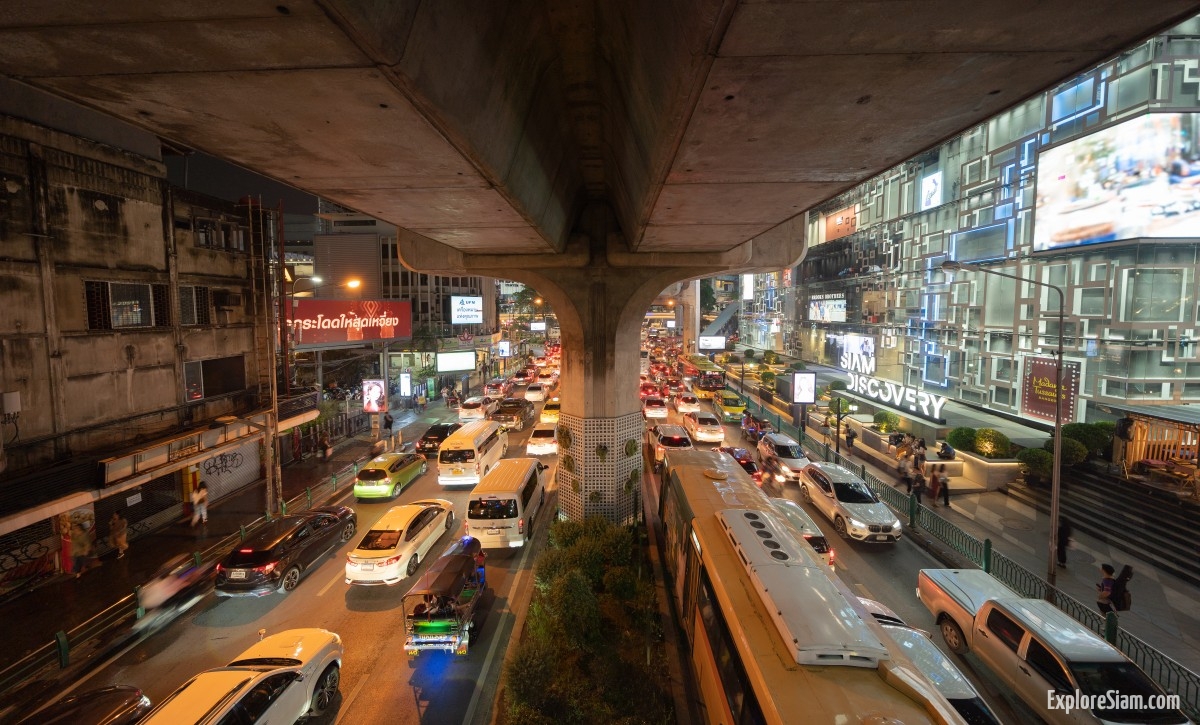Thailand, with its vibrant cities, scenic landscapes, and cultural treasures, is a captivating destination for travelers. While many choose public transportation or organized tours to explore this Southeast Asian gem, some adventurers prefer the freedom and flexibility of driving. However, driving in Thailand presents unique challenges and cultural nuances that can be quite different from what many visitors are accustomed to. One of the most fundamental aspects of driving in Thailand is the left lane perspective, which permeates every aspect of road usage and driving etiquette in the country.
Historical Context and Legal Framework
Thailand’s driving practices are heavily influenced by its colonial past. Unlike many of its neighboring countries that drive on the right, Thailand follows the British system of driving on the left. This historical decision continues to shape the country’s road infrastructure and driving culture. The legal framework governing road usage in Thailand mandates driving on the left, with steering wheels positioned on the right side of vehicles. This orientation requires drivers, especially those from right-hand drive countries, to adjust their spatial awareness and driving habits.
Adapting to Left-Lane Driving
For newcomers, adapting to driving on the left can be a daunting task. The first challenge is reorienting oneself to the road layout. Intersections, roundabouts, and lane changes all operate differently in a left-lane system. At intersections, left turns are made into the closest lane, while right turns must navigate across oncoming traffic. Roundabouts circulate clockwise, and drivers must yield to vehicles already in the circle, entering from the left.
Lane discipline is another crucial aspect of left-lane driving. In Thailand, the left lane is generally considered the slow lane, while the right lane is reserved for overtaking. However, this convention is not always strictly followed. Motorbikes, a common mode of transport, often weave through traffic, occupying spaces that might otherwise be considered dangerous or impractical in other countries. This necessitates constant vigilance and adaptability from drivers.
Urban Driving Challenges
Driving in Thai cities presents a unique set of challenges. Cities like Bangkok are notorious for their heavy traffic, congestion, and complex road networks. Navigating through urban areas requires a keen understanding of local driving practices and an ability to stay calm under pressure. Traffic signals and road signs are essential guides, but not all drivers adhere to them strictly. It is common to see motorbikes and even cars running red lights or making sudden lane changes without signaling.
Parking in urban areas can also be a challenge. With limited space and high vehicle density, finding a suitable parking spot often requires patience and skill. In some areas, double parking is a common practice, and vehicles may be parked in seemingly chaotic patterns. Understanding the informal rules of parking, such as leaving the handbrake off for manual cars so they can be moved if blocking another vehicle, is essential.
Rural and Scenic Routes
While city driving can be intense, rural and scenic routes offer a more relaxed and picturesque driving experience. Thailand’s countryside is dotted with charming villages, lush forests, and stunning coastal roads. However, rural driving comes with its own set of considerations. Roads in these areas may be narrower and less well-maintained than in urban centers. Potholes, uneven surfaces, and unexpected obstacles like livestock are common.
In rural areas, it is also important to be aware of local customs and driving behaviors. For instance, it is common for drivers to use headlights and hazard lights to communicate intentions or signal warnings. Flashing headlights might indicate an intention to overtake or warn of an upcoming hazard. Understanding and correctly interpreting these signals can significantly enhance driving safety and ease.
Safety and Preparedness
Safety is a paramount concern for anyone driving in Thailand. The country has a high rate of road accidents, and being well-prepared can make a significant difference. Ensuring that the vehicle is in good condition, with functioning lights, brakes, and tires, is essential. Carrying a first aid kit, emergency tools, and knowing the local emergency contact numbers are also prudent measures.
Defensive driving is particularly important in Thailand. Being aware of other road users, anticipating potential hazards, and maintaining a safe following distance can help mitigate risks. Additionally, it is advisable to avoid driving at night, especially on unfamiliar rural roads, due to the increased risk of accidents and limited visibility.
Cultural Considerations and Courtesies
Driving in Thailand is not just about navigating roads but also understanding and respecting local cultural practices. Thai people are generally polite and patient, and this extends to their driving behavior. Honking is usually reserved for warnings rather than expressions of frustration. Maintaining a calm and composed demeanor, even in challenging situations, is appreciated.
Understanding local courtesies can also enhance the driving experience. For example, it is common practice to allow pedestrians and motorbikes to pass, even if they do not have the right of way. Being patient and giving way can help foster a more harmonious driving environment.
Driving in Thailand offers a unique and enriching way to explore the country’s diverse landscapes and vibrant cities. The left-lane perspective requires adaptation and awareness, but with preparation and an understanding of local practices, it can be a rewarding experience. Embracing the challenges and joys of driving in Thailand allows for a deeper connection with the country’s culture and a greater appreciation of its scenic beauty.





